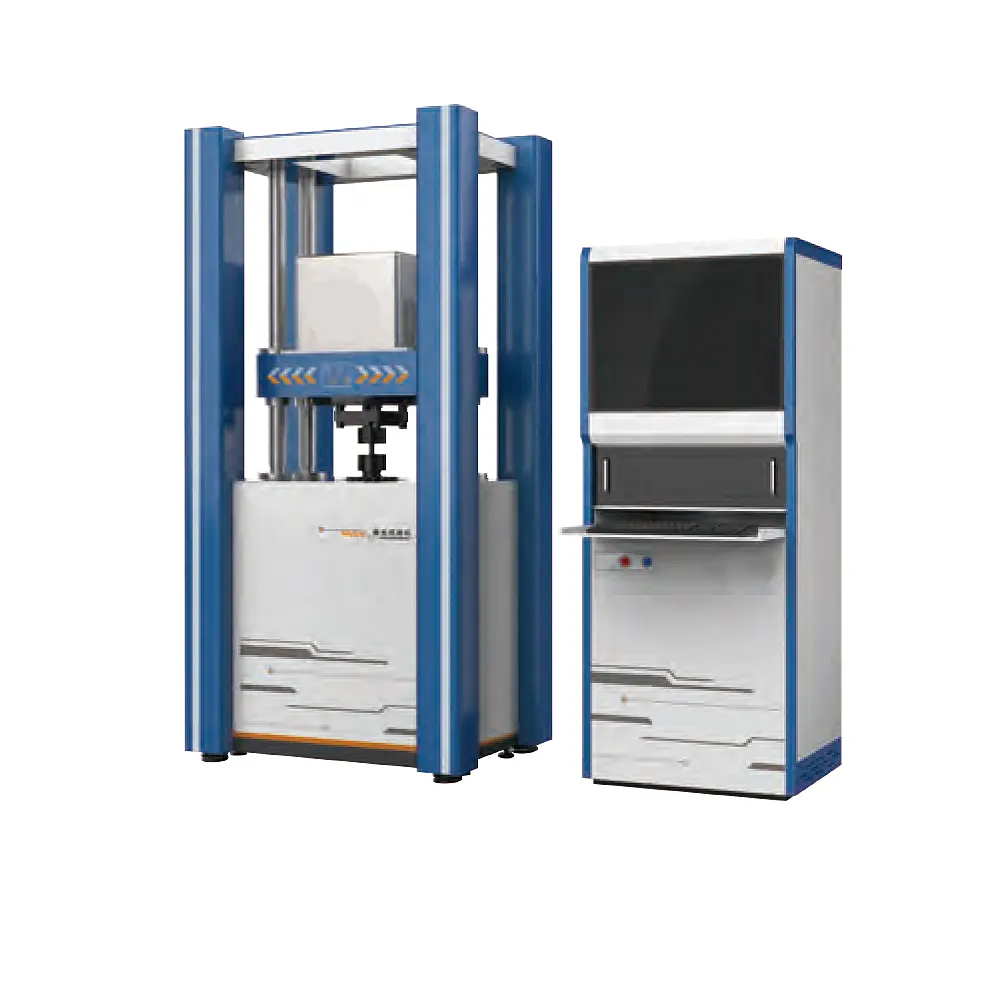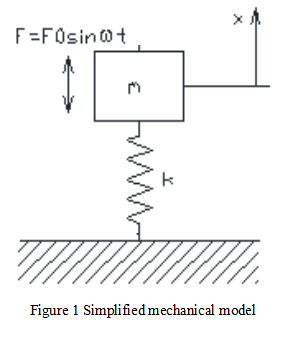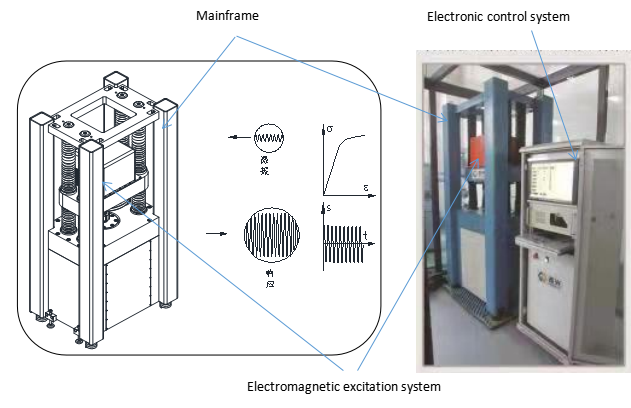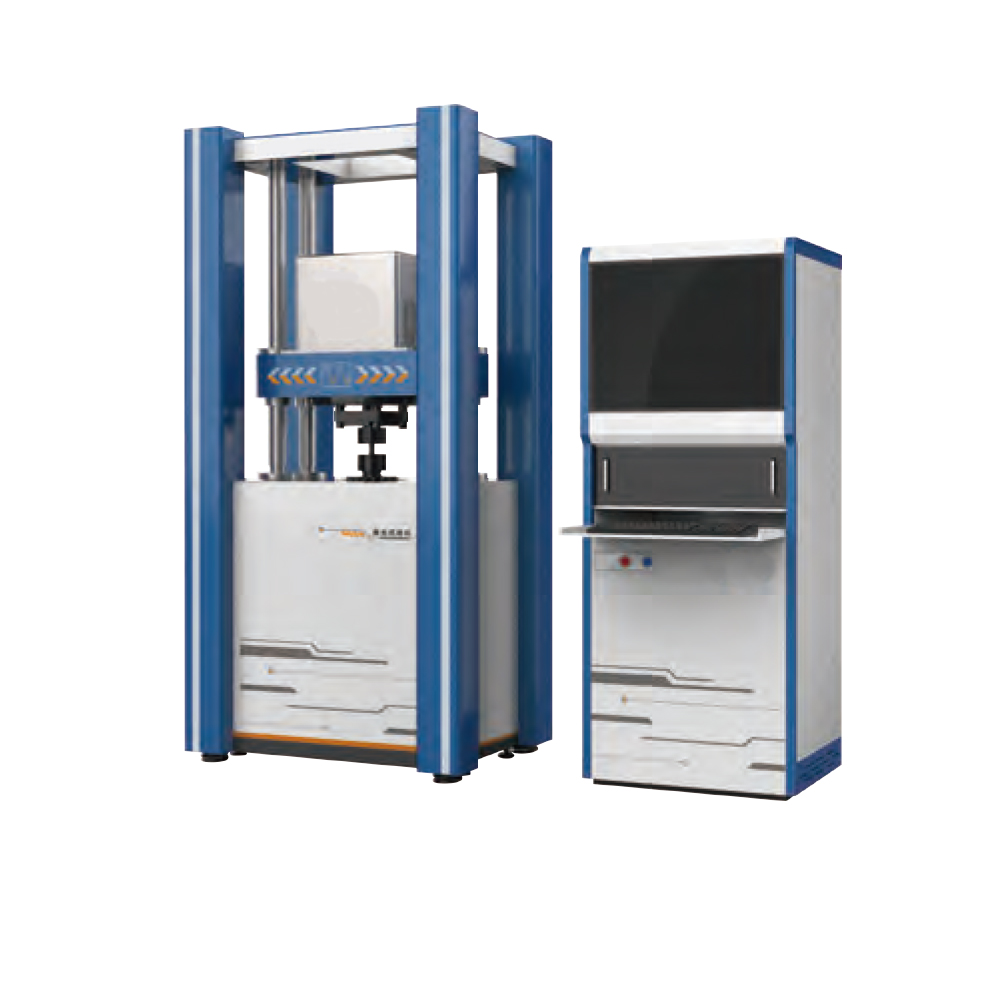
New design 450Hz ultra High Frequency Fatigue Testing Machine
Ⅰ.Application
This high-frequency fatigue testing machine, can realize the specimen in the machine load, space, environmental allowable range, in the resonant way to apply high-frequency alternating load, inertia load; in the elastic force way to apply static load. Load mode can be a variety of pulling, pressing, bending, shearing, twisting, etc. The test piece, which can be any member presented in solid form, is not limited in material and shape. It can be high temperature, high humidity, salt spray and other special environments. Machine with electromagnetic resonance loading high-frequency testing machine, electronic universal testing machine (optional custom function), vibration table (optional custom function) three traditional machine functions, to achieve a multi-purpose machine. The use of the machine on the industry, there is no special limit, suitable for any need to load the test, to obtain the specimen mechanical performance indicators, including fatigue performance, strength, stiffness, deformation and other performance indicators.
Ⅱ.Features
Electromagnetic resonance type high frequency testing machine, with natural energy saving and time saving high efficiency characteristics. Also because no liquid, gas and other working media, and thus no environmental pollution.
1.Energy saving
Working in the electromagnetic resonance loading mode, theoretically the machine requires almost no external energy consumption. Compared with the electro-hydraulic servo mode which applies the same load, it can save more than 98% of electrical energy. The test consumes almost no electricity, making it the most energy-efficient working machine. Therefore, there is also no need for large, expensive heat dissipation systems.
2.Reduced working time
It usually works at very high frequency, so the test working time can be greatly reduced. For example, to complete 10^7 times of alternating load, if the operating frequency of 350Hz, the test time consumed is 7.9 hours. Correspondingly, if the electro-hydraulic servo technology is used for loading, the general working frequency is at the level of 50Hz, and the working time required is about 56 hours.Test efficiency is increased by 6 times.
3.No oil and liquid pollution
The equipment does not use liquid working medium, so there is no environmental pollution problem in any case, and it is a clean working device.
Ⅲ.Features
Electromagnetic resonance loading high-frequency testing machine, in addition to the natural advantages of electromagnetic resonance high-frequency testing machine, with distinctive features, expressed in terms of structure, function, performance, software operation, etc.
1.Structure
Internal and external double four-column structure, to ensure high rigidity and movement guidance and geometric accuracy of the machine. All the moving parts are not exposed, the appearance of the machine is neat, there is no hidden safety risks.
2.Performance
The working frequency of the equipment can be higher than the upper limit of 300Hz set in the standard of electromagnetic high frequency machine, up to 450Hz;
The equipment allows the amplitude of the test piece ± 3mm;
The force sensor can be placed on top to achieve force measurement, leaving a large and flexible space on the working table to install test pieces, providing conditions for implementing special test pieces, such as extra-long, extra-large pieces, shaped pieces, cantilever beam pieces, etc.
3.Software
Touch screen operation, photo input, rich specimen
The working process of the equipment is completed by special software, which is operated in human-computer dialogue. All operations can be realized by simple prompts on the finger touch screen. Input information, test pieces, requirements, memos, records, operators, etc., can be entered by means of cell phone photos. The software prepares and records enough specimen types, including examples of tests done in the past and other test specimen examples that can be completed by the equipment, so that the general operator only needs to select to start and complete the test task.
Ⅳ.The working principle and structural composition
1.working principle
Electromagnetic high-frequency fatigue testing machine, its working principle is based on the principle of vibration mechanics of the multi-degree-of-freedom system, around the main vibration type to achieve forced resonance of a working device. The main vibration type is a simplified single-degree-of-freedom linear elastic system (Figure 1), with the test piece as the vibrating elastic element; the use of resonance to achieve force amplification, with a smaller input excitation force and excitation power, through the excitation of the internal energy of the system, in order to obtain a larger force application effect, to achieve the purpose of energy saving and efficiency; the design of higher resonance frequency, to shorten the time to apply the load.

Electromagnetic high frequency fatigue testing machine, the complete vibration system composition and simplified mechanical model is shown in Figure 2.
Composition:1 excitation electromagnet, 2 electromagnet support spring, 3 armature (also as the main vibration system mass), 4 preload beam, 5 screw nut, 6 preload spring, 7 test piece, 8 force sensor, 9 screw bearing, 10 motor and transmission system, 11 machine base, 12 damping spring, 13 foundation.

2.Structural composition
The electronic control system includes the main control microcomputer, servo control card, electromagnetic excitation solenoid drive control system, servo motor drive control system, signal detection system.
The main control microcomputer is a set of industrial control computer, windows operating system, touch screen, with RS232 serial communication, wireless Bluetooth communication, network communication and other functions.
Servo control card, a special control circuit.
Electromagnetic excitation solenoid drive control system, a set of special drive and control circuit, including electromagnetic coil, power amplifier, DC power supply, etc.
Servo motor drive control system for the working drive and control of servo electric.
Signal detection system, including force measurement sensor and its signal processing circuit, acceleration sensor and its signal processing circuit, temperature sensor and circuit, extensometer and circuit, and beam limit switch.
When working, through the special control program, the computer completes various test work tasks by automatic, semi-automatic and fully automatic ways.

Ⅴ.Technical parameters
Static error: ≤±0.5%, dynamic error: ≤±2%.
Mean range fluctuation: within 24 hours of continuous operation, the fluctuation of the maximum load is not greater than ± 0.3% FS.
Amplitude range fluctuation: in 24 hours of continuous operation, the maximum load fluctuation is not greater than ± 0.3%FS.
Frequency range: 60 ~ 450Hz.
Frequency resolution: 0.1Hz.
This equipment test space: ≥ 600mm; equipment operating height: 1000 ~ 1100mm.
Force coaxiality: ≤ 5%.
Noise: ≤ 68dB.
Maximum record range: 9×108. automatically record the number of test cycles, and has a power-down protection function; cycle number can be set at any time, with automatic stop function after reaching the specified number of cycles; with the function of preventing the automatic start again after an accidental stop such as power failure.
With real-time display of dynamic load waveform, current waveform, excitation waveform and other functions.
Optional fracture mechanics-related test functions, such as fracture toughness test function and crack expansion rate test function, etc.
With complete protection functions, such as overload protection, mechanical limit protection, motor overcurrent protection, fracture protection, exciter overcurrent secondary protection, frequency drop protection, dynamic and static load upper and lower limits artificially set protection, dynamic and static load runaway protection, etc. Many protections can be flexibly configured according to the requirements of different tests, and the test process can be unattended.





